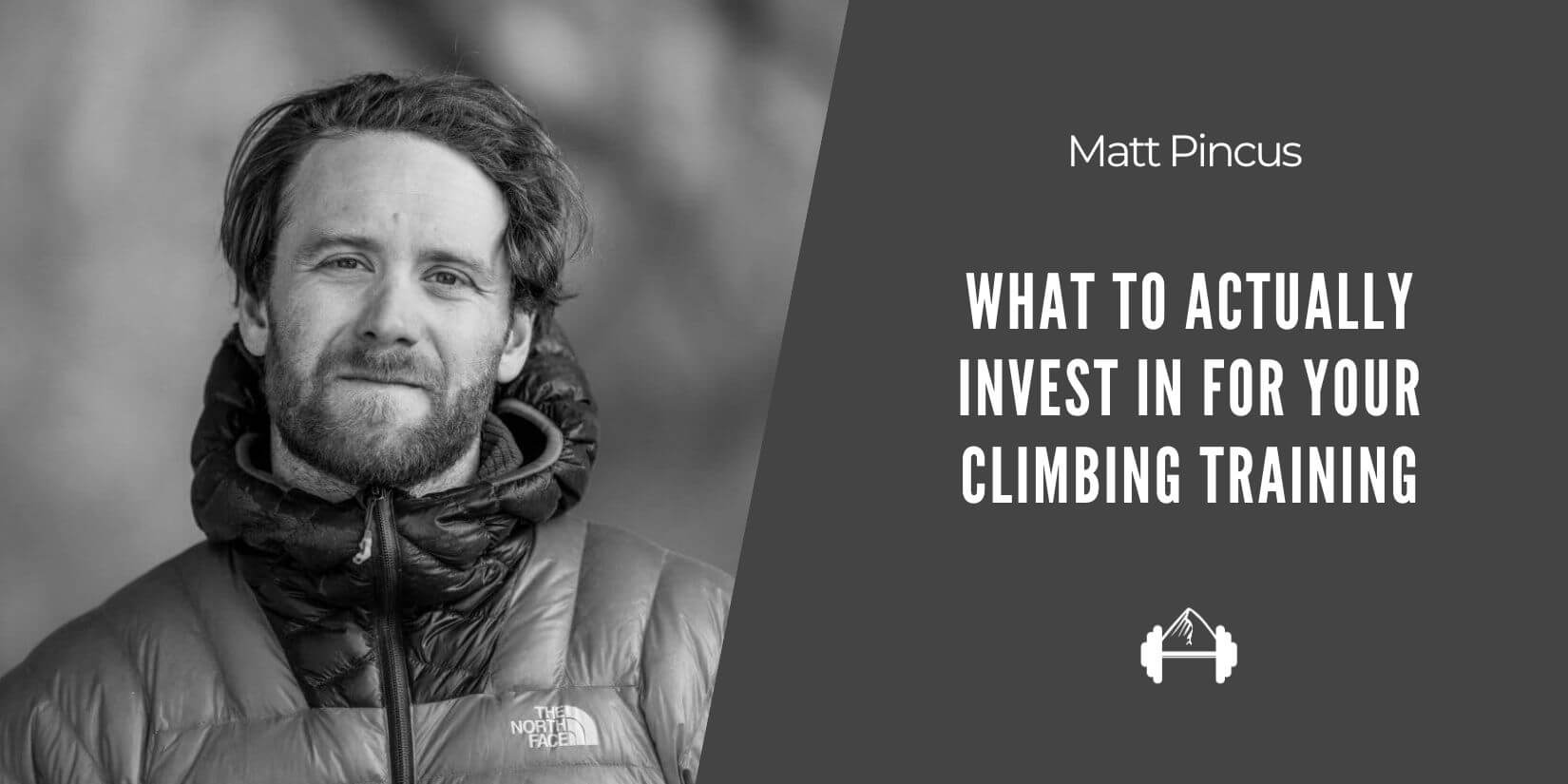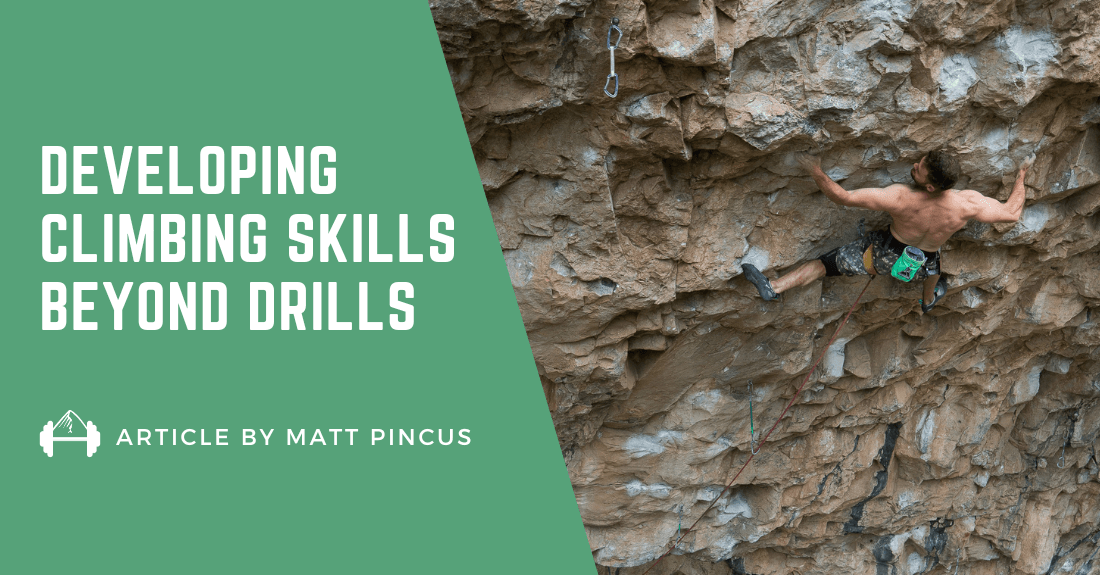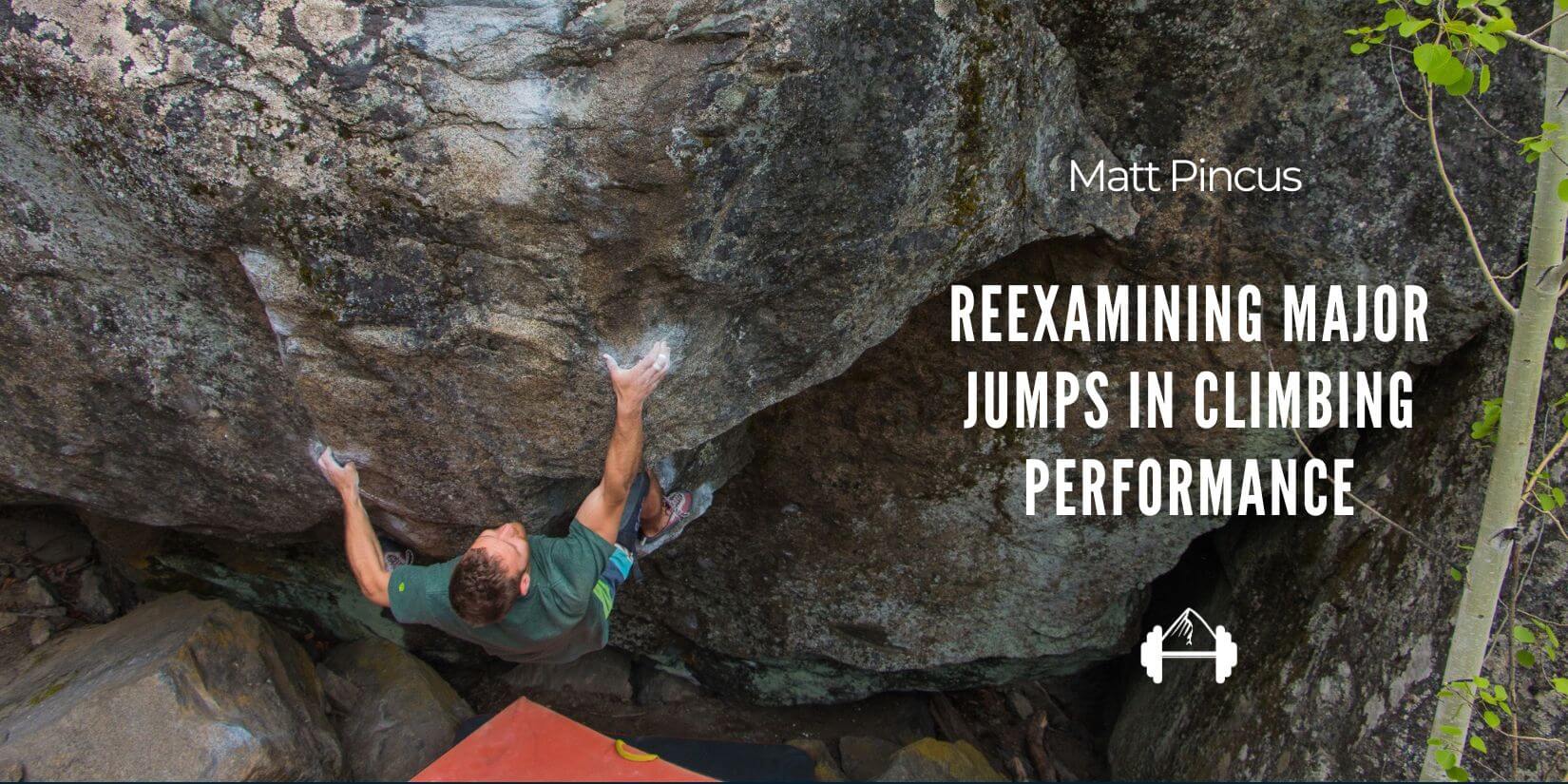Recently, I wrote to the TrainingBeta email subscribers about how I was changing up my training for the winter and how switching back to bouldering for a bit during the late fall had reinvigorated my psyche after a disappointing fall sport climbing season.
I wrote that piece while I was in the midst of training for a January trip to Hueco. My training was going well and I couldn’t wait to get down there and keep my bouldering momentum going. I ended up going to Hueco and had an amazing time for a while…
But unfortunately, things didn’t go to plan and I fully ruptured the A2 pulley in my pinky on my fourth climbing day of the trip.
Injuries suck. I don’t have any silver lining.
All I’ll say at this point – because frankly rehab is pretty boring and I’m tired of talking about my injury or even thinking about it – is that injuries happen even when you are doing everything right. It’s an unfortunate part of pushing yourself in a sport, but it’s a reality.
After cutting my trip short and heading back to Wyoming winter, I’ve found myself with a bit of free time. Nothing like being injured to really highlight how much time you spend climbing.
To help stay motivated as my finger heals, I have been building a home wall.
This board is going to be an all-wooden hold spray wall that prioritizes small holds, bad feet, and the body tension required to use them. Basically, I’m trying to create what I imagine British cellar boards are like, but in Wyoming.
The process of building it, finding holds I want, and setting the board has been really enjoyable so far. It’s not a project I ever plan on “finishing.” Instead, I see it as a tool I can continue to build and customize to my own training needs as my needs evolve over time.
Essentially, I see building the board now as an investment in my future training sessions.
As I haven’t been able to climb on the board yet and won’t be able to for at least another month to six weeks, I can’t tell you if I’ve done a good job or not. Digging into this project, however, has gotten me thinking about the value of investing in the quality of your future training.
 |
Common investing advice is that the best time to invest was yesterday and the second best time is now. This line of thinking has a lot of value when applied to climbing training as well.
If you’re reading this newsletter and you plan on climbing at a higher level in the future, there’s no better time to start laying the groundwork for that success than now.
So what are some ways we can think longer-term and invest in improving the quality of our training down the line?
Hangboards and Kettlebells
Now when I say “invest,” all of us immediately think of spending money to acquire new training tools or equipment. Building a home wall is clearly an example of this.
Unfortunately, building a board is also seriously expensive–trust me, you have no idea–and requires having the space to do so. The good news is there are much cheaper and less spacially demanding options that can still have a huge impact on improving the quality of your training moving forward.
Enter hangboards and kettlebells.
Hangboards
A Beastmaker hangboard is $123 and it can be installed in just about any living situation.
Yes, you probably already have access to a variety of hangboards at your local climbing gym, but you simply can’t beat the convenience of having one in your own home.
|
|
A high quality finger training session can take as little as thirty minutes from start to finish, including the warmup. If your fingerboard is just a few steps away, you won’t have to add in time commuting to the gym.
Making your finger training this convenient means you might actually do your hangboard sessions and do them consistently.
To put it differently, hangboarding is already pretty boring when compared to actually climbing. Installing a fingerboard at home removes many of the barriers that prevent lots of us from actually training our fingers consistently.
As this consistency is the secret to getting stronger fingers, I’d say it’s worth the buy-in and a pretty good return on investment from a little over a hundred dollars spent if you ask me.
Kettlebells
The same is true for kettlebells. Yes, it would be great to have a fully stocked weight room with a barbell, rack, bench, dumbbells, and kettlebells at home. Unfortunately, just like building a home wall this is expensive and requires quite a bit of space.
The good news is that kettlebells offer a lot of bang for your buck.
Buy a kettlebell you can press overhead and then a kettlebell in each of the next two sizes up. These three bells will run you $250-$300 in total.
|
|
They take up next to no space, you can get ruthlessly strong using them, and they will outlive you.
Again, pretty good ROI for a couple hundred dollars. Plus, you can use them to add weight to your hangboard sessions now that you have super strong fingers as well – win-win.
Learning New Skills to Expand Your Tool Chest
Whether it’s building a home wall, installing a hangboard, or acquiring a couple of kettlebells, these investments all involve purchasing items to improve the future quality of your training.
There are, however, non-monetary investments we can all make as well. They involve learning new skills.
Whenever I start working with a new athlete, one of the questions I ask is about their comfort level in the weight room. Sure, I can write them a strength program that calls for a heavy deadlift or a kettlebell swing, but if the climber in question has never learned how to hinge before we need to start there before we can train this movement pattern effectively.
Think of it this way: I don’t believe there are any “good” or “bad” training implements out there.
- Is the campus board good or bad? Depends on how you use it.
- Are barbells or back squats good or bad? Depends on how they are being used and when.
- What about board climbing? Same answer.
All of the above implements are tools.
Would you ask a carpenter if a hammer or a table saw is “a good” tool? No, that’s the wrong question. It’s not about whether something is a good or a bad tool. It’s about whether it’s the right tool for the job AND whether or not you know how to use it.
Need to improve your shoulder strength and stability? It’s pretty nice to already know how to bench press and overhead press.
Need to improve your finger strength in a specific position? Having experience in how to do this safely and progressively on the hangboard is certainly a plus. I could keep listing examples here, but I think you get the point.
I do want to be careful here, however. This is not a call to simply jump from one training modality to another constantly chasing whatever new training fad looks new and shiny. That’s experimenting, not learning.
Instead, pick an implement you’ve been avoiding.
Seek out whatever instruction you might need to get started and then stick with it long enough to really learn the ins and outs of that tool.
Ten sessions without changing the protocol is a good place to start. You might not be using this tool optimally yet, but learning the skill of how to use the tool now will leave you more prepared to do so in the future.
Coaching
As a coach, I’d be remiss if I didn’t mention coaching as a worthy investment.
Yes, coaching costs money, but if you’ve ever been coached then you know how valuable getting an outside perspective on your climbing and training can be. While I see this all the time from the coaching side of the relationship, the rehab process of my current finger injury has let me see it from the athlete side once again.
I have been working with Dr. Kevin Cowell from The Climb Clinic in Golden, CO. Seeing him in person I was able to get a definitive diagnosis for my injury and a rehabilitation plan that gives me a clear path back to climbing.
This has meant that I can stay out of my own head and don’t have to constantly debate whether or not I’m doing enough, doing too much, pushing too hard, or not pushing hard enough.
Obviously, this structure has been really helpful in dealing with my injury in giving me confidence that I’m heading in the right direction. Investing in getting advice about your climbing from an external perspective, however, doesn’t have to be confined to dealing with injuries.
If you’ve made it this far in the newsletter, I know that you care about improving your climbing. Getting some quality coaching doesn’t just mean you get the structure of being told what to do and when.
Quality coaching can also illuminate what you’ve been neglecting in your pursuit of higher climbing performance and – maybe most importantly – give you the confidence to stick with a program and know that you are heading in the right direction.
Again, another worthy investment that will help you get more out of your training efforts and will have a greater impact on the quality of your future training than any change or protocol or sets/reps ever could.
I’m here for you if you want to work with me as your coach.
So, to sum things up, I’m not only building a board because I can’t climb at the moment, have some free time, and need something to keep me motivated. I’m building a board because I know it will be a valuable tool in my training for years to come.
What kind of investments in your future training can you make? They might just be what gets you and keeps you on the path of continual improvement.
Stay the course. Keep showing up.
Coach Matt
More Resources from Matt:
- Pre-Built Bouldering and Route Training Programs
- So Many Podcast Episodes!
- Blog Posts on Training for Climbing
Work with Matt on Your Climbing Performance
Whether you’re in the middle of your outdoor climbing season, you’re preparing for a big trip, or you just want to get better at rock climbing, Matt coaches climbers of all abilities on an individual basis no matter where you are in the world.
He’ll sit down over Zoom and talk to you about your goals, your strengths and weaknesses, your time limitations, and the equipment you have available. After you talk, he’ll make you a program specific to your needs on the TrueCoach app that you can follow and communicate with him through.
He’s helped hundreds of climbers get smarter about their training and stronger overall. He’s super easy to work with, very smart, dedicated, extremely responsive and responsible, and he’ll get you the results you’re looking for without overtraining you.
Work with Matt as Your Coach
If you’re not quite ready to sign up for one-on-one coaching with Matt but you do want his expertise and a structured plan, he designed both our Performance Bouldering and Performance Route Training Programs, which are super affordable, beautifully laid-out training plans you can access from your phone.
Matt uses the same kinds of drills described in this newsletter in both of these programs. You get targeted performance climbing practice, power endurance drills, and all kinds of other skill practice in each session. Plus you’ll get strength training sessions laid out for you using weights, bodyweight, and TRX.
There are 3 levels to choose from in either the bouldering or routes program, and you get access to Matt in free office hours once per month to ask any questions you have.
You can log your workouts in an online logbook so you can track your progress, and you can try the whole thing for free for 7 days.
Check Out the Bouldering Program
Check Out the Route Training Program
|
|
If you want this kind of content to show up in your email inbox as soon as it’s published on TrainingBeta, you can opt into our email list here.





Leave A Comment